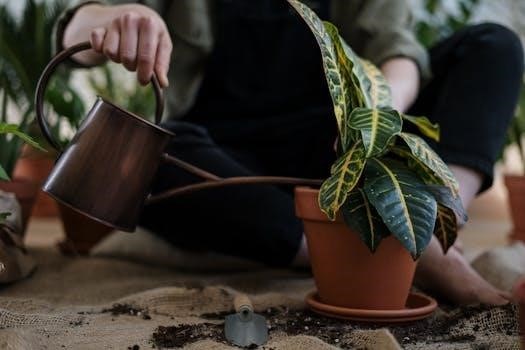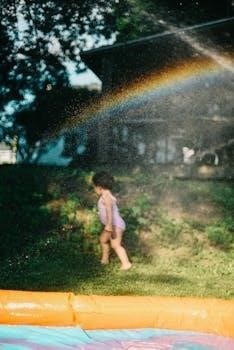Understanding Oscillating Sprinklers
Oscillating sprinklers utilize a straightforward design where water flows into a spray arm equipped with multiple nozzles. This arm then moves back and forth, distributing water in a fan-like pattern. These sprinklers provide a wide, even coverage area.

How Oscillating Sprinklers Work
Oscillating sprinklers operate through a simple yet effective mechanism. Water enters the sprinkler base and is channeled up into a long, hollow spray arm. This arm is equipped with a series of small nozzles or holes along its length. The water pressure forces the water out through these nozzles, creating individual streams or sprays. The spray arm is mounted on a pivot point which allows it to rotate back and forth in a sweeping motion. This movement is usually powered by the water pressure itself or a small geared motor. The rotation of the arm creates the oscillating effect, distributing water over a rectangular or fan-shaped area. The speed and range of the oscillation can be adjusted on some models. This is typically done through the use of small collars, tabs or levers that can alter the arc of the arm’s movement. This ensures that the sprinkler covers the desired area of the lawn or garden effectively. This simple mechanism ensures wide area coverage.
Water Flow Mechanism
The water flow mechanism in an oscillating sprinkler is relatively straightforward, relying on water pressure to drive its function. Water enters the sprinkler through a hose connection at the base. This water then travels through an internal channel or pipe up into the spray arm. The spray arm is a hollow tube with a series of nozzles strategically placed along its length. The water pressure from the hose forces the water through these nozzles, creating streams or sprays of water. The size and angle of these nozzles are crucial for creating the desired coverage pattern. The water pressure not only ejects the water but also contributes to the movement of the spray arm. The arm pivots back and forth distributing water evenly over the designated area. The consistent water flow is vital for the sprinkler’s effectiveness. Any obstruction or reduction in pressure can disrupt the operation. This is why it’s important to ensure a clear path for the water to flow through the sprinkler.

Setting Up Your Sprinkler
Setting up your oscillating sprinkler involves connecting it to a garden hose. Ensure the connection is tight to prevent leaks. Position the sprinkler in the center of the area you intend to water. Adjust settings as needed.
Adjusting Coverage Area
To adjust the coverage area of your oscillating sprinkler, you’ll typically find collars or tabs on the spray arm. These collars allow you to control the range of the sprinkler’s oscillation. For full coverage, slide the collars completely apart; this allows the sprinkler to rotate fully from one side to the other. If you only need to water a specific area, like the right side, slide the collars to the right, limiting the sprinkler’s movement. This feature is extremely useful for watering smaller lawns or gardens or when you need to avoid watering certain areas such as patios or walkways. Experiment with different collar positions to find the ideal coverage for your specific needs. Remember, precise adjustment minimizes water waste, ensuring that water only goes where it is needed. The adjustable range offers flexibility and helps achieve efficient watering tailored to your outdoor space. This control is key to effective and water-conscious lawn care.
Using the Collars
The collars on an oscillating sprinkler are essential for customizing the watering pattern. These adjustable components directly influence the sprinkler’s arc of motion. To achieve full, broad coverage, ensure the collars are positioned fully apart. This setting allows the sprinkler arm to sweep completely back and forth, distributing water across the maximum possible area. Alternatively, if you wish to focus watering on only one side, such as the right side of the sprinkler, slide the collars towards that direction. This action restricts the arm’s movement, preventing water from reaching unwanted areas. These collars provide precise control, enabling you to tailor the watering pattern to the specific shape and size of your lawn or garden. Experimenting with different collar positions will help you to optimize water usage and avoid overwatering or unnecessary water waste. Adjust the collars as needed for efficient irrigation.

Optimizing Sprinkler Performance
To maximize your sprinkler’s effectiveness, avoid misting by adjusting water pressure. Also, water on calm days to prevent wind drift. Utilize adjustable features for tailored watering and check soil moisture to avoid overwatering.
Avoiding Misting
Misting, the formation of fine water droplets, is a common issue that reduces the efficiency of your oscillating sprinkler. When water is sprayed as a mist, it is more susceptible to evaporation and wind drift, meaning less water reaches your lawn or garden. Several factors contribute to misting, with excessive water pressure being the primary culprit. If your water pressure is too high, the water is forced through the nozzles too forcefully, breaking it into a fine mist instead of a more substantial stream. To address this, consider using a pressure regulator or throttling back the water supply valve. This will reduce the force of the water passing through the sprinkler, allowing for larger droplets. Additionally, make sure that the nozzles are clean, as obstructions may increase pressure and lead to misting. Regularly inspect and clean nozzles. Proper adjustment of water flow will conserve water, ensure efficient irrigation and prevent water waste.
Watering on Calm Days
Watering your lawn or garden on calm days is essential for maximizing the effectiveness of your oscillating sprinkler. When the wind is blowing, it can significantly disrupt the water distribution pattern, leading to uneven watering and wasted water. Wind can carry the spray away from the intended area, causing some parts of your yard to be overwatered while others remain dry. This not only wastes water but can also negatively impact the health of your plants. By choosing calm days for watering, you ensure that the water reaches the targeted area, allowing for more efficient and effective irrigation. Early morning or late evening are usually the calmest periods of the day, making them ideal times to use your oscillating sprinkler. This way, you’ll minimize water loss due to evaporation and wind drift, resulting in a healthier and more evenly watered landscape. Pay attention to the weather forecast and plan your watering accordingly.

Maintaining Your Sprinkler
Regular maintenance is key to a long-lasting and effective sprinkler. Keep nozzles free from clogs by regularly inspecting and cleaning them. This will ensure consistent water distribution and prevent performance issues, guaranteeing years of reliable use.
Keeping Nozzles Unclogged
Maintaining clear nozzles is crucial for optimal sprinkler performance. Over time, mineral deposits, dirt, and debris can accumulate, obstructing the water flow and causing uneven spraying. This not only reduces the sprinkler’s efficiency but also wastes water and can lead to patchy lawn coverage. Regularly inspect the nozzles for any signs of blockage. A simple visual check can often reveal the problem. Use a small brush, a needle, or a toothpick to gently remove any buildup. Avoid using sharp objects that could damage the nozzle openings. For stubborn clogs, you can soak the spray arm in a solution of water and vinegar. This helps to dissolve mineral deposits. After cleaning, ensure all nozzles are clear before reconnecting the sprinkler. Keeping your nozzles unclogged will help ensure an even and consistent watering pattern, promoting a healthy, thriving lawn. It will also help you save money by making sure you’re not wasting water due to poor spray patterns. Regular checks and cleaning will prevent the need for expensive repairs and ensure your sprinkler lasts longer.



